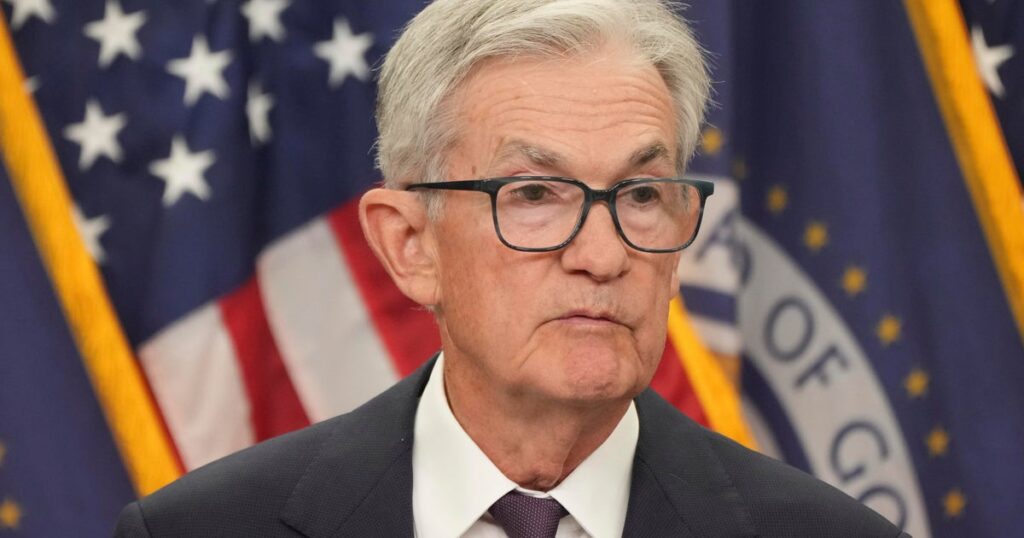The Federal Reserve on Wednesday lowered its benchmark interest rate by 0.25 percentage points — its first cut since December — as the U.S. grapples with a stalling labor market and slower economic growth.
The Fed cut reduces the federal funds rate — what banks charge each other for short-term loans — to between 4% and 4.25%, down from its prior range of 4.25% to 4.5%. The last time the central bank eased borrowing costs was in December 2024, when it also trimmed rates by a quarter of a percentage point.
Federal Reserve officials are also penciling in two more rate cuts in 2025, but only one in 2026, according to the central bank’s summary of economic projections. That may disappoint Wall Street, with investors before the meeting projecting a total of five cuts over the rest of the year and 2026.
According to those median projections, Fed officials expect the nation’s unemployment rate, currently 4.3%, to reach 4.5% by year-end before ticking down to 4.4% in 2026 and 4.3% the following year.
Personal Consumption Expenditures (PCE) — the Fed’s preferred gauge of inflation — is forecast to level off at 3% this year, well above the central bank’s 2% annual target, before receding to 2.6% next year and 2.1% in 2027. The median projections for core inflation, which strips out volatile food and energy costs, forecast PCE of 3.1% this year.
The move comes as the Fed contends with a two-fold economic challenge: curbing inflation, which has flared in recent months, while supporting job growth, which has slumped. The Fed typically seeks to tame inflation by nudging up interest rates to slow economic growth, while cutting rates in periods when the economy is faltering to encourage consumer spending and business investment.
“In this less dynamic and somewhat softer labor market, the downside risks to employment appear to have risen,” Powell said in a press conference following the Fed’s two-day meeting.
He added that recent labor data shows that what he termed “people at the margins,” which he said include recent college grads, are now having a harder time finding employment.
“The overall job-finding rate is very, very low, but the layoff rate is also very low,” Powell noted. “The concern is that if you start to see layoffs, the people who are laid off, there won’t be a lot of hiring going on.”

In acting to lower interest rates, the Fed is signaling that it views the slowing labor market as a more pressing concern than rising prices, as Fed Chair Jerome Powell underlined at his Jackson Hole address last month in Wyoming.
“Concerns for the labor market’s health are rising,” said Cory Stahle, economist in the Indeed Hiring Lab, in a statement after the Fed’s decision. “Unemployment and layoffs are relatively stable at historically low levels, which is encouraging, but they are unlikely to stay that way if labor market conditions deteriorate further.”
At the same time, Powell said the Fed now views the pass-through of the Trump administration’s tariff as being “smaller and slower” than central bank officials had expected earlier this year. “We continue to expect [inflation] to move up, maybe not as much as we would have a few months ago,” he said.
The rate cut comes amid intense political pressure on the Fed, with President Trump repeatedly accusing Powell of moving too slowly to ease borrowing costs and shore up economic activity.
Mr. Trump is also seeking to put his imprint on the Fed. To that end, he has sought to remove Fed Governor Lisa Cook from her seat on the central bank’s board, alleging that she engaged in mortgage fraud. She has denied committing fraud and challenged Mr. Trump’s authority to fire her, with an appeals court ruling Monday that Cook can keep her job.
One vote for a jumbo cut
An economic adviser to Mr. Trump, Stephen Miran, was confirmed by the Senate on Monday to take an open spot on the Fed’s Board of Governors. He will also sit on the 12-member Federal Open Markets Committee, or FOMC, which sets interest rates for the Fed.
“Stephen Miran was a last-minute addition to the FOMC, but his vote won’t drastically alter the outcome. He joined too late to submit an economic projection and path for monetary policy,” Oxford Economics analysts said in a report this week ahead of the Fed’s rate cut.
All of the voting FOMC members except one — Miran — voted in favor of the quarter-point cut, according to the central bank’s statement. Miran voted for a larger cut of 0.50 percentage points, the Fed noted.
A key question for consumers and businesses is whether the Fed trimming borrowing costs for the first time in nearly a year augurs additional cuts in 2025 and heading into 2026. Fed officials have two more meetings this year, set for October and December.
Although the FOMC members were largely united on the size of today’s cut, their projections of future cuts show a difference of opinion about the path of monetary policy moving forward. Many of the group’s members don’t expect the panel to make any more cuts this year, according to the summary of economic projections.
“That median hides the deep split on the FOMC –– nine of 19 members don’t anticipate further cuts this year,” Michael Pearce, deputy chief U.S. economist at Oxford Economics, said in a report.
Powell noted that a quarter-point cut isn’t likely to make a huge difference to the economy, but added, “You have to look at the path” of future cuts expected later this year and in 2026. “It starts with a 25 basis point cut — it’s not just one action,” he said.
contributed to this report.
https://www.cbsnews.com/news/federal-reserve-fomc-meeting-today-rate-cut-september-2025-powell-impact/


